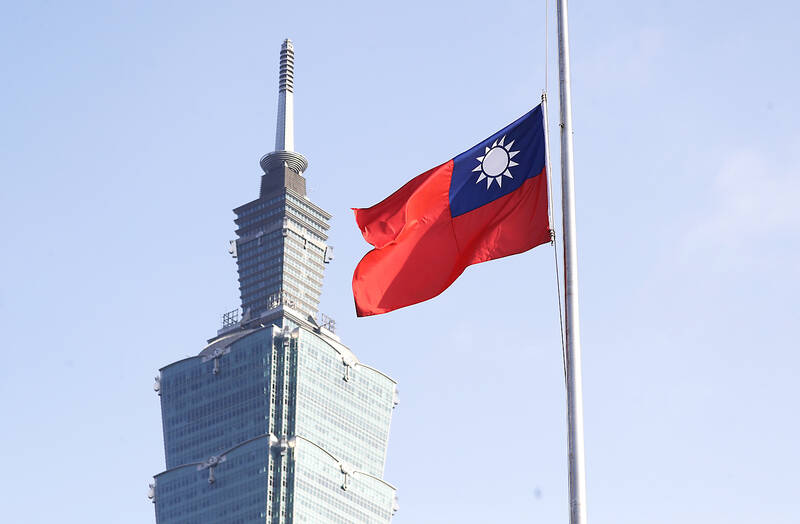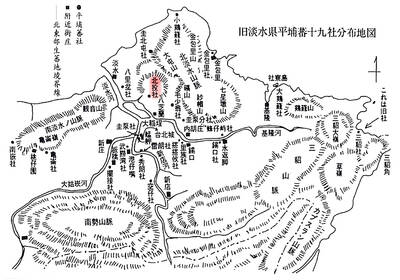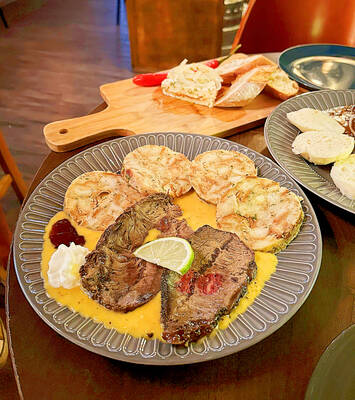“Why does Taiwan identity decline?”a group of researchers lead by University of Nevada political scientist Austin Wang (王宏恩) asked in a recent paper. After all, it is not difficult to explain the rise in Taiwanese identity after the early 1990s. But no model predicted its decline during the 2016-2018 period, they say.
After testing various alternative explanations, Wang et al argue that the fall-off in Taiwanese identity during that period is related to voter hedging based on the performance of the Democratic Progressive Party (DPP). Since the DPP is perceived as the guardian of Taiwan identity, when it performs well, that identity rises, and more people tell pollsters that they are “Taiwanese only.”
However, “the unique cross-strait context creates the opportunity for Taiwanese people to choose from the identity portfolio,” since “Chinese” exists as an alternative. Hence, they argue that when the DPP is perceived as failing, the public hedges, and shifts its identity to a more mixed identity (but, I might add, still Taiwan-centered).

Photo: Chen Yi-kuan, Taipei Times
ASSAULT ON TAIWANESE IDENTITY
This means that the Chinese Nationalist Party’s (KMT) attacks on the DPP are both political moves common in any democracy and assaults on the Taiwan identity. Since the New Power Party (NPP) failed to provide a viable progressive alternative party, and the Taiwan People’s Party (TPP) has turned into a shadow KMT, at present there is no alternative for the DPP to share its solitary guardianship of the Taiwanese identity.
The Taiwan identity is also bound up with Taiwan democracy. Former Hon Hai Precision Industry Co (鴻海精密) chairman Terry Gou (郭台銘) years ago famously sneered “Democracy doesn’t put food on the table.” At the time the comment provoked a firestorm, partly because it touched on a core truth: for most ordinary Taiwanese the democratic period has not been an economic success. For a nation that came of age as a “miracle” economy, this may be a grave threat to the DPP, democracy and the Taiwan identity.

Photo: AP
A recent paper in Competition & Change by Tat Yan Kong and Yin-wah Chu on rising income inequality and regime security in Taiwan describes the situation. Drawing on famed economist Thomas Picketty’s findings they note that between 1990 and 2020, the top 10 percent share of pre-tax income “increased from 37.0 percent to 48.1 percent, which was much more rapid than [South] Korea’s 32.0 percent to 34.5 percent, Germany’s 32.6 percent to 37.4 percent, and even the liberal United States 39.8 percent to 44.4 percent.” Growth of democracy has been accompanied by factories running off to the People’s Republic of China (PRC), stagnant wages and the emergence of thousands of zombie firms.
Although the rise in inequality in Taiwan has been accompanied by a trickle of welfare spending, the authors observe that the “mild redistributive outcome of social welfare benefits paled in the face of sharp income increase among the wealthiest members of the society.”
Both major parties, the KMT and the DPP, courted business with a variety of “reforms” after 2000 that ended up benefiting big business and the wealthy. Meanwhile Taiwanese firms that had gone to the PRC in search of subsidies, lax regulation and cheap, controlled labor moved on to Indonesia or Vietnam, and did not return.
Taiwan’s excellent income equality, a legacy of the export prowess of its small and medium enterprises (SMEs), soured as the share of SMEs in the export economy fell. Large firms, with access to policymakers in Taiwan and in the PRC, benefited the most from the investment in the PRC. They also benefited from the various development policies of both major parties.
The 2020-22 experience of COVID-19 exacerbated these issues. A 2022 survey by CPA Australia showed that “fifty-two per cent of small businesses nominated COVID-19 as a major negative factor in 2021, up from 45 per cent in 2020. However, 38 per cent also said it was a major positive influence on their business.”
The big winners were export firms and tech businesses, the survey said, while hospitality firms suffered. Note that this poll suffers from survivorship bias: this “majority” consists of businesses that made it through both years of pandemic and hung around long enough to complete the survey in 2022. Pandemic business losses remain a sore point with the electorate.
21ST CENTURY DEMOCRATIC EXPERIENCE
The “democratic experience” of the 21st century is a downward spiral of small firms, from manufacturing SMEs to night market stalls, coupled with rising income inequality, and poor prospects for the young, impacting voters who might otherwise vote DPP.
Given all this, does Wang et al’s conclusion hold? Their data turned out to be a temporary downturn — in the well-known poll of the National Chengchi University (NCCU) Election Study Center, “Taiwanese” identity had indeed fallen to 54 percent in 2018 from a high of 60 percent, but it quickly rebounded and stood at 63.4 percent by the end of last year, compared to 31 percent for “Taiwanese-Chinese.”
The criticism of the DPP record, much of it disinformation originating in the PRC, has not resulted in further “hedging” by voters. Quite the opposite: despite the daunting economic problems facing Taiwan, local identity continues to solidify. Moreover, except for that short period, the proportion of voters identifying as “Taiwanese” continues to broadly rise over time, irrespective of the state of the economy.
Last year the 94 percent for whom being Taiwanese is central to their identity voted to give the TPP, then a rising potential third force, the deciding vote in the legislature and handed the TPP presidential candidate 26 percent of the vote. Voters are quite confident in their identity, and the voting for the legislature, the party list and the president shows they vote strategically. This suggests that the linkage between DPP success and Taiwan identity has weakened. Should an alternative Taiwan-centered party rise and remain stable, the DPP could lay down its burden of guarding Taiwan identity, and we could have actual Taiwan-centered politics.
Perspicacious Taipei Times writer Donovan Smith last week contended that Taichung mayor Lu Shiow-yen (盧秀燕), now a rising star in the KMT, is aiming at the 2028 presidential election by positioning herself as a moderate centrist.
“She has consciously staked out a position as being both moderate pan-blue and strong on defense,” he wrote, adding that Lu had even used the DPP slogan “Resisting China and protecting Taiwan (抗中保台)” in response to the PRC live-fire military exercises that Beijing claimed were in response to then-US Speaker of the House Nancy Pelosi’s visit to Taiwan.
Could the voter confidence in the Taiwan identity that gave the TPP 26 percent of the presidential vote give a centrist positioned KMT candidate like Lu enough support to vault her into the presidency?
Notes from Central Taiwan is a column written by long-term resident Michael Turton, who provides incisive commentary informed by three decades of living in and writing about his adoptive country. The views expressed here are his own.

Seven hundred job applications. One interview. Marco Mascaro arrived in Taiwan last year with a PhD in engineering physics and years of experience at a European research center. He thought his Gold Card would guarantee him a foothold in Taiwan’s job market. “It’s marketed as if Taiwan really needs you,” the 33-year-old Italian says. “The reality is that companies here don’t really need us.” The Employment Gold Card was designed to fix Taiwan’s labor shortage by offering foreign professionals a combined resident visa and open work permit valid for three years. But for many, like Mascaro, the welcome mat ends at the door. A

The Western media once again enthusiastically forwarded Beijing’s talking points on Japanese Prime Minister Sanae Takaichi’s comment two weeks ago that an attack by the People’s Republic of China (PRC) on Taiwan was an existential threat to Japan and would trigger Japanese military intervention in defense of Taiwan. The predictable reach for clickbait meant that a string of teachable moments was lost, “like tears in the rain.” Again. The Economist led the way, assigning the blame to the victim. “Takaichi Sanae was bound to rile China sooner rather than later,” the magazine asserted. It then explained: “Japan’s new prime minister is

NOV. 24 to NOV. 30 It wasn’t famine, disaster or war that drove the people of Soansai to flee their homeland, but a blanket-stealing demon. At least that’s how Poan Yu-pie (潘有秘), a resident of the Indigenous settlement of Kipatauw in what is today Taipei’s Beitou District (北投), told it to Japanese anthropologist Kanori Ino in 1897. Unable to sleep out of fear, the villagers built a raft large enough to fit everyone and set sail. They drifted for days before arriving at what is now Shenao Port (深奧) on Taiwan’s north coast,

Divadlo feels like your warm neighborhood slice of home — even if you’ve only ever spent a few days in Prague, like myself. A projector is screening retro animations by Czech director Karel Zeman, the shelves are lined with books and vinyl, and the owner will sit with you to share stories over a glass of pear brandy. The food is also fantastic, not just a new cultural experience but filled with nostalgia, recipes from home and laden with soul-warming carbs, perfect as the weather turns chilly. A Prague native, Kaio Picha has been in Taipei for 13 years and